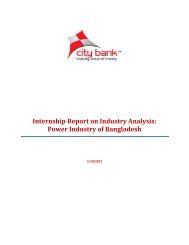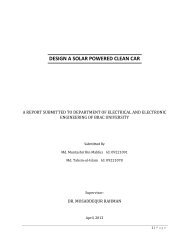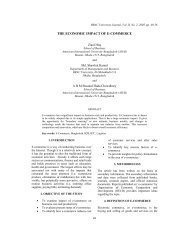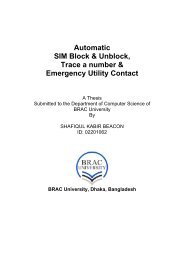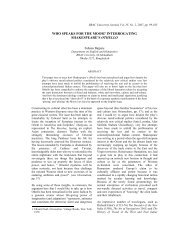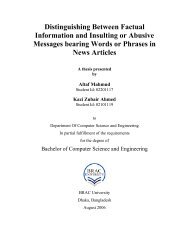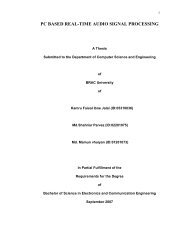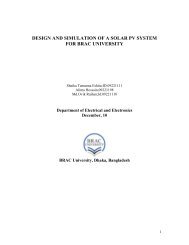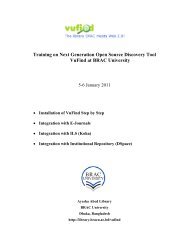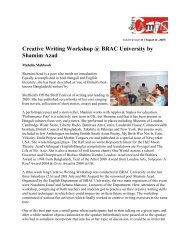LITERATURE SURVEY OF AUTOMATIC FACE RECOGNITION ...
LITERATURE SURVEY OF AUTOMATIC FACE RECOGNITION ...
LITERATURE SURVEY OF AUTOMATIC FACE RECOGNITION ...
Create successful ePaper yourself
Turn your PDF publications into a flip-book with our unique Google optimized e-Paper software.
Table 5.2.4<br />
Result for combined databases<br />
From the tested data of above table we can evaluate the performance of<br />
these algorithms.<br />
5.3 On the Four Individual Data Bases<br />
The Eigenface did very well on the MIT data base (97% recognition) and<br />
the Bern data base (87%). Its performance on the two other individual data bases<br />
was somewhat less satisfactory.<br />
5.3.1 Eigenface<br />
Eigenface Elastic<br />
Matching<br />
In fact the Eigenface technique implements the minimum distance<br />
classifier, which is optimal if the lighting variation between the training and testing<br />
samples can be modeled as zeromean AWGN. This might work if the mean is<br />
nonzero but small. When the lighting variation is not small, it could introduce a<br />
large bias in the distance calculation. In such cases, the distance between two<br />
face images is dominated by the difference in their lighting conditions rather than<br />
the differences between the two faces, thereby rendering the distance an<br />
unreliable measure for face recognition. Respective researcher proposed to take<br />
the derivative of the images to reduce biases caused by lighting change. When<br />
the lighting change is spatially varying, however—for example, half bright and<br />
half dark, as in the Weizmann database .the derivative will introduce its own<br />
biases at the boundary of the lighting change.<br />
Auto<br />
Association<br />
and<br />
classification<br />
Networks<br />
66% 93% Not tested<br />
35



